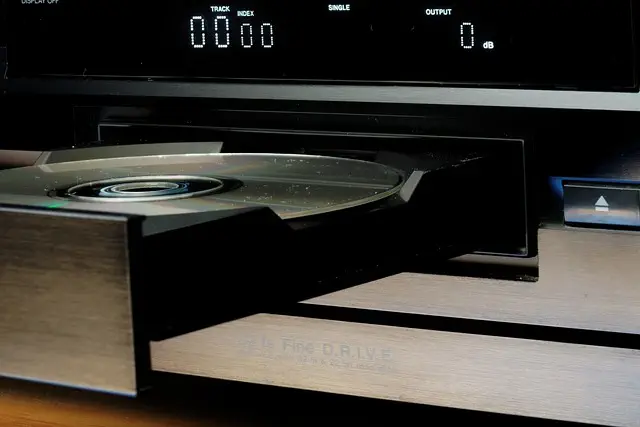DivX, with its efficient compression techniques like VBR and motion compensation, has been a go-to format for video sharing and storage due to its balance between quality and file size. Burning DivX files to DVD further optimizes space, preserving high-definition content through advanced algorithms while ensuring compatibility with traditional players. This method is ideal for managing large video libraries, streamlining backup practices, and enabling convenient sharing on diverse platforms, making it a Burn DivX Files to DVD game changer in today's digital era.
Discover how to enjoy high-quality videos without bloated file sizes. This comprehensive guide explores the revolutionary DivX format, offering a fraction of the size with minimal quality loss. We delve into the advantages of smaller video files and show you how burning DivX files to DVD is an effective optimization technique. Learn about real-world applications, from streaming to archival, where high-quality, small video files make a significant impact.
Understanding DivX Files: A Comprehensive Overview

DivX files are a compression format that has revolutionized video sharing and storage for many years. The primary goal of DivX is to deliver high-quality video content while significantly reducing file sizes, making it easier to share and store videos digitally. This technology has been instrumental in enabling users to Burn DivX Files to DVD, ensuring that movies, home videos, and other digital media can be enjoyed on traditional DVD players without sacrificing quality or size.
The DivX format employs advanced compression techniques, including variable bit rate (VBR) encoding and sophisticated motion compensation, to minimize file size while maintaining excellent visual fidelity. This makes it a popular choice for online video streaming, peer-to-peer sharing, and creating digital media libraries due to its balance between quality and efficiency. By understanding DivX files and their capabilities, users can harness the power of this format to create compact yet high-quality videos that are readily accessible on various devices, including DVD players.
The Advantages of Smaller File Sizes for Videos

Smaller file sizes offer numerous advantages for videos, particularly in terms of storage and transmission efficiency. By compressing video data without significantly impacting quality, users can save valuable space on their devices and reduce bandwidth requirements during streaming or sharing. This is especially beneficial when dealing with high-definition content, which typically demands larger files but can be optimized to fit within tighter constraints.
Furthermore, compact file sizes facilitate easier burning of DivX files to DVD, allowing for a greater number of minutes of video to be stored on a single disc. This compactness also streamlines backup and archival processes, making it simpler to safeguard valuable video libraries against data loss or system failures.
How Burn DivX Files to DVD Can Help Reduce Size

Burn DivX Files to DVD is an effective method to significantly reduce video file size while preserving quality. By converting your high-definition videos into a DVD format, you can take advantage of compression techniques that shrink the overall file size. This process is particularly beneficial for online sharing or when storage space is limited. The advanced compression algorithms used in DVD burning ensure that the video retains its original clarity and visual appeal, even with a much smaller file.
This method allows users to enjoy their favorite DivX videos on various DVD players, making it convenient for viewing on different devices without compromising quality. Additionally, burning to DVD can facilitate easy backup and sharing of videos, ensuring your content is accessible and secure.
Techniques to Optimize Video Quality Despite Smaller Size

To achieve high-quality video at a reduced file size, several optimization techniques can be employed without compromising visual fidelity. One effective method is Burn DivX Files to DVD, which involves encoding videos in DivX format and burning them to DVDs. This process leverages advanced compression algorithms that minimize file size while maintaining excellent picture quality.
Additional strategies include adjusting video settings like resolution, bit rate, and frame rate. Lowering the resolution reduces file size significantly but might affect visual detail, while manipulating bit rates allows for fine-tuning image clarity. Balancing these factors ensures the desired level of quality despite the smaller file size.
Real-world Applications and Benefits of High-quality, Small Video Files

In today’s digital age, where video content is increasingly consumed across various devices and platforms, high-quality, small video files offer a myriad of real-world applications and benefits. From streaming services to social media platforms, users demand crisp, clear visuals without compromising on file size. This is particularly advantageous for online distributors, enabling them to provide richer experiences to their audiences while optimizing bandwidth usage. For instance, creating engaging social media posts with minimal file sizes ensures faster upload times and wider reach, fostering better user engagement.
Moreover, the ability to burn DivX files to DVD opens up a world of possibilities. With smaller file sizes, it becomes feasible to store and share high-definition videos on optical discs, catering to users who still prefer physical media. This technology revolutionizes home entertainment, allowing individuals to enjoy their favorite movies or personal videos in stunning quality without the bulkiness of traditional data storage methods.
In conclusion, the ability to create high-quality videos at a fraction of their traditional file size offers significant advantages for content creators and consumers alike. Techniques like burning DivX files to DVD, optimizing video quality, and leveraging smaller file sizes enable efficient storage, faster streaming, and seamless playback on various devices. This innovative approach not only enhances user experiences but also paves the way for new possibilities in multimedia distribution and accessibility.
